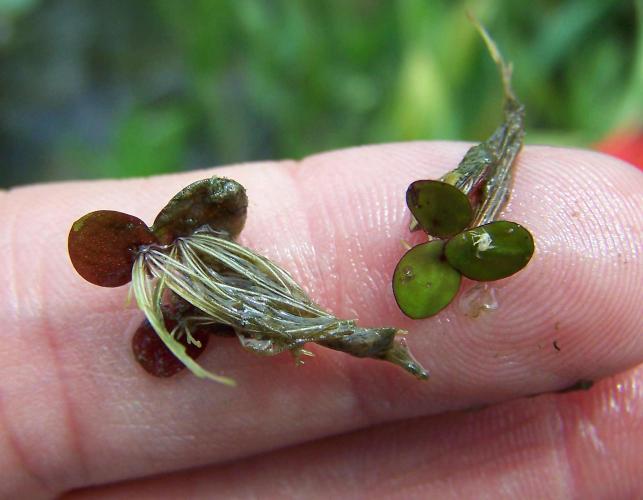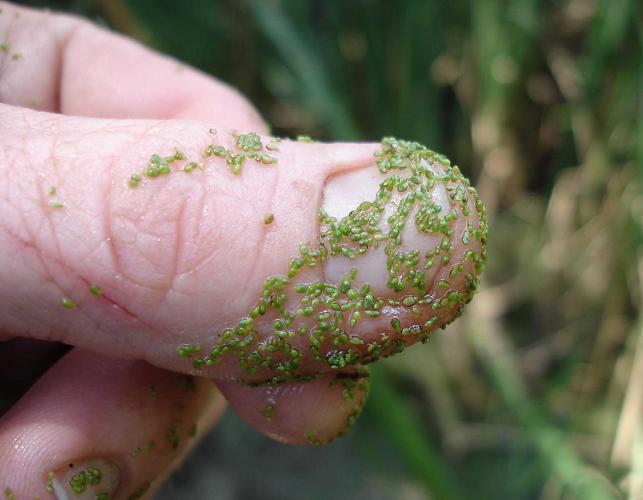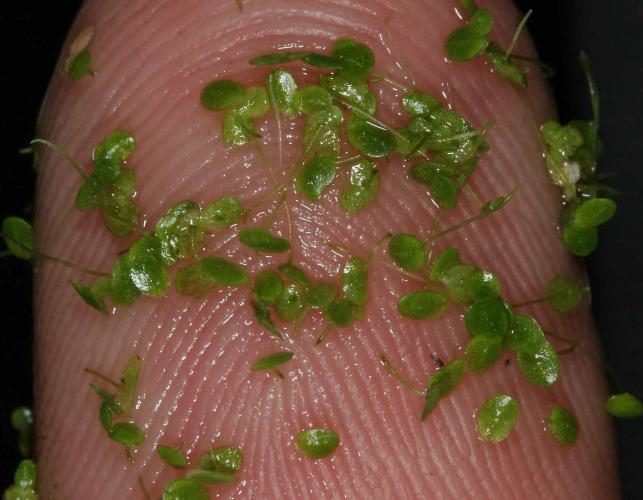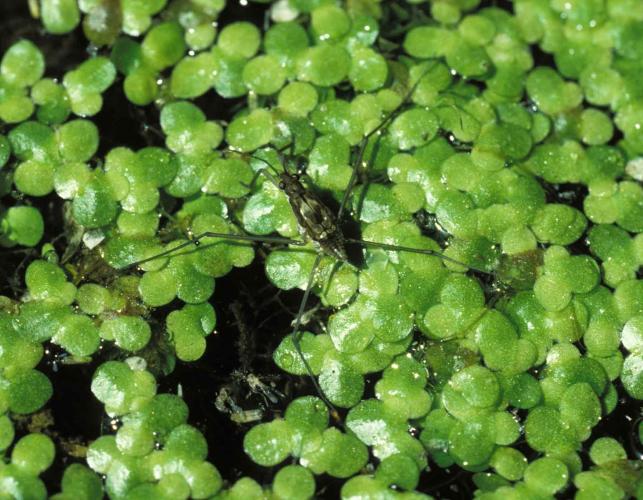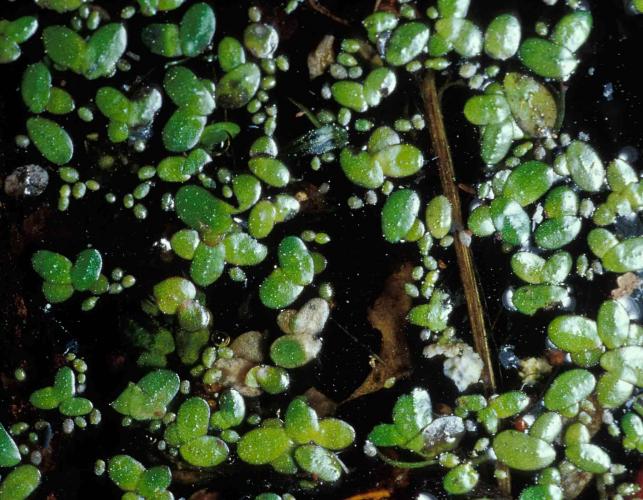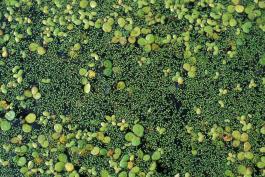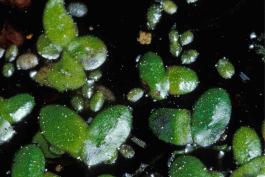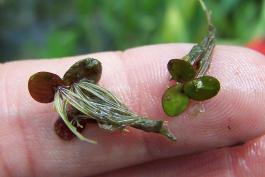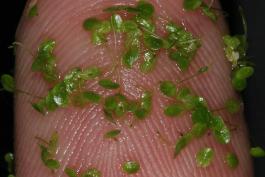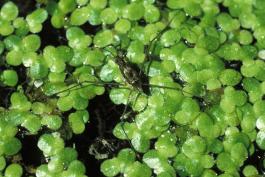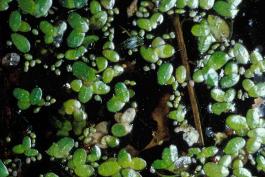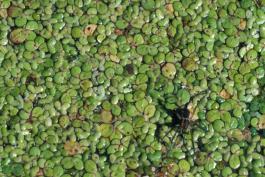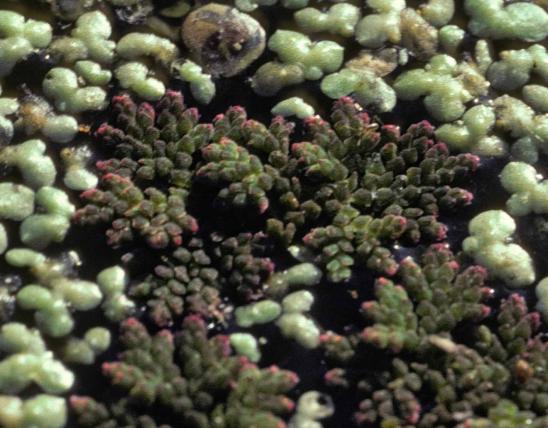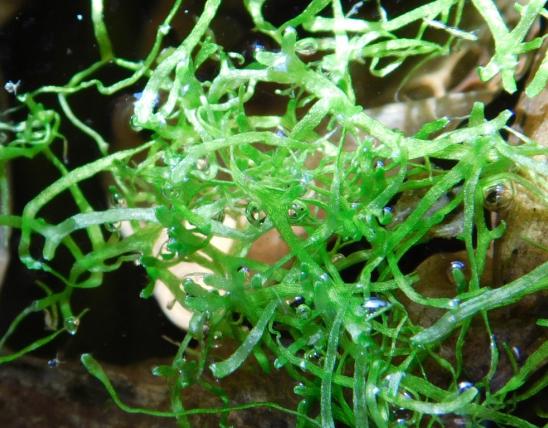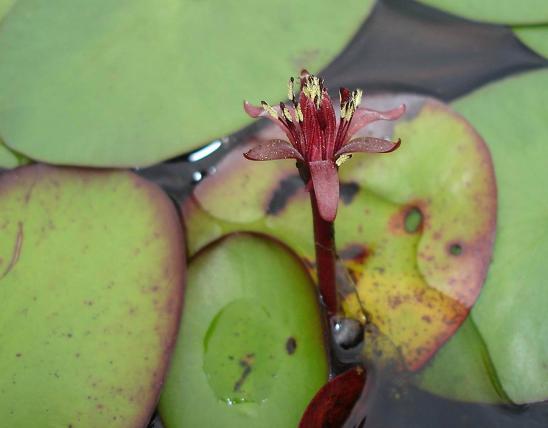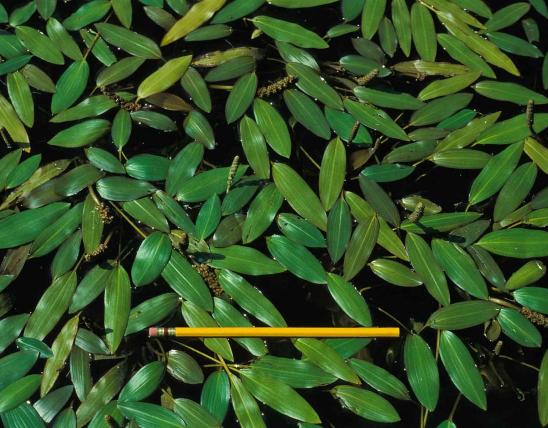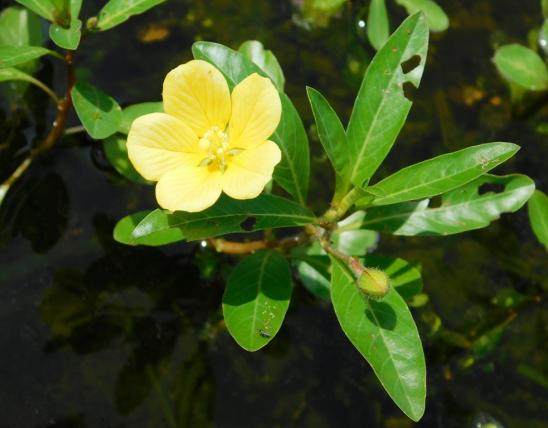
Duckweeds are the smallest of the flowering plants, which consist of tiny, green, rounded, leaflike bodies (fronds) that float on the water’s surface. Several duckweed plants can fit easily on a fingertip. They occur singly or connected in groups. They usually reproduce by budding, but do (rarely) produce tiny, simple, male and female flowers. Missouri has 8 species of duckweeds (genus Lemna), 2 of giant duckweed (Spirodella), and 3 of watermeal (Wolffia).
Each duckweed plant (genus Lemna) is a green, leaflike circular or oval frond less than ¼ inch across, each bearing a single short, hairlike root that dangles into the water.
Giant duckweeds grow in clusters of 1–3, with 2-20 roots per frond. Each frond can be nearly ⅜ inch across.
The watermeal genus includes the smallest flowering plants known; each plant is about the size of a pinhead and lacks roots; they look like tiny green dots.
Fronds measure to nearly ⅜ inch across, depending on genus.
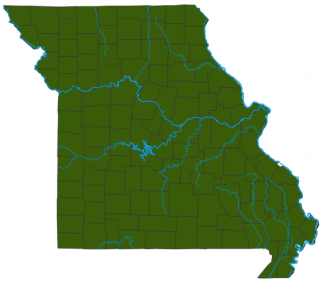
Statewide.
Habitat and Conservation
Most duckweeds float on the surface of shallow and stagnant ponds, lakes, ditches, swamps, and still backwaters of streams and rivers. They sometimes form mats and can be stranded on mud by a receding waterline. One species, star duckweed (L. trisulca), grows submerged in cool, flowing water of spring branches and streams. In ponds, common duckweeds (notably L. minor) can spread quickly, especially when nutrients such as nitrogen and phosphorus are plentiful, and become a nuisance.
Control
Human Connections
By providing food and cover for many types of aquatic wildlife, duckweed contributes to fishing, frog and duck hunting, and more. In old, nutrient-rich ponds, and those contaminated with feedlot runoff or sewage, duckweed can spread quickly, cover the surface, and become a nuisance.
Ecosystem Connections
Duckweed and watermeal are important foods for wildlife, especially waterfowl. They also provide cover for frogs, turtles, and more. In the presence of excessive nutrients, dense duckweed growth can block out sunlight, shading out oxygen-producing plants below, upsetting a pond’s natural balance.


